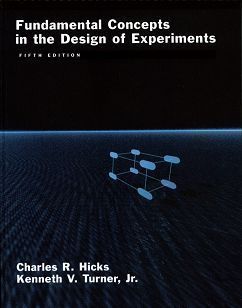書籍分類

Fundamental Concepts in the Design of Experiments 5/e
作者:Charles R. Hicks, Kenneth V. Turner
原價:NT$ 1,350
ISBN:9780195122732
版次:5
年份:1999
出版商:Oxford University
頁數/規格:565頁/精裝單色
版次:5
年份:1999
出版商:Oxford University
頁數/規格:565頁/精裝單色
內容介紹 本書特色 目錄
- Description
Fundamental Concepts in the Design of Experiments, 5/e offers comprehensive coverage of the key elements of experimental design used by applied researchers to solve problems in the field. Wide-ranging and accessible, it shows students how to use applied statistics for planning, running, and analyzing experiments. Featuring over 350 problems taken from the authors' actual industrial consulting experiences, the text gives students valuable practice with real data and problem solving. The problems emphasize the basic philosophy of design and are simple enough for students with limited mathematical back grounds to understand. The authors provide extensive coverage of the analysis of residuals, the concept of resolution in fractional replications, Plackett-Burman designs, and Taguchi techniques. SAS (Statistical Analysis System) computer programs are incorporated to facilitate analysis.
Thoroughly revised and updated, this new edition includes sixty new problems, focuses more on computer use (adding computer outputs from statistical packages like Minitab, SPSS, and JMP), and emphasizes graphical procedures including residual plots and normal quantile plots. Ideal for various advanced undergraduate and graduate experimental methods courses taught in statistics, engineering, and mathematics departments, this book will also appeal to professionals and researchers doing experimental work.


